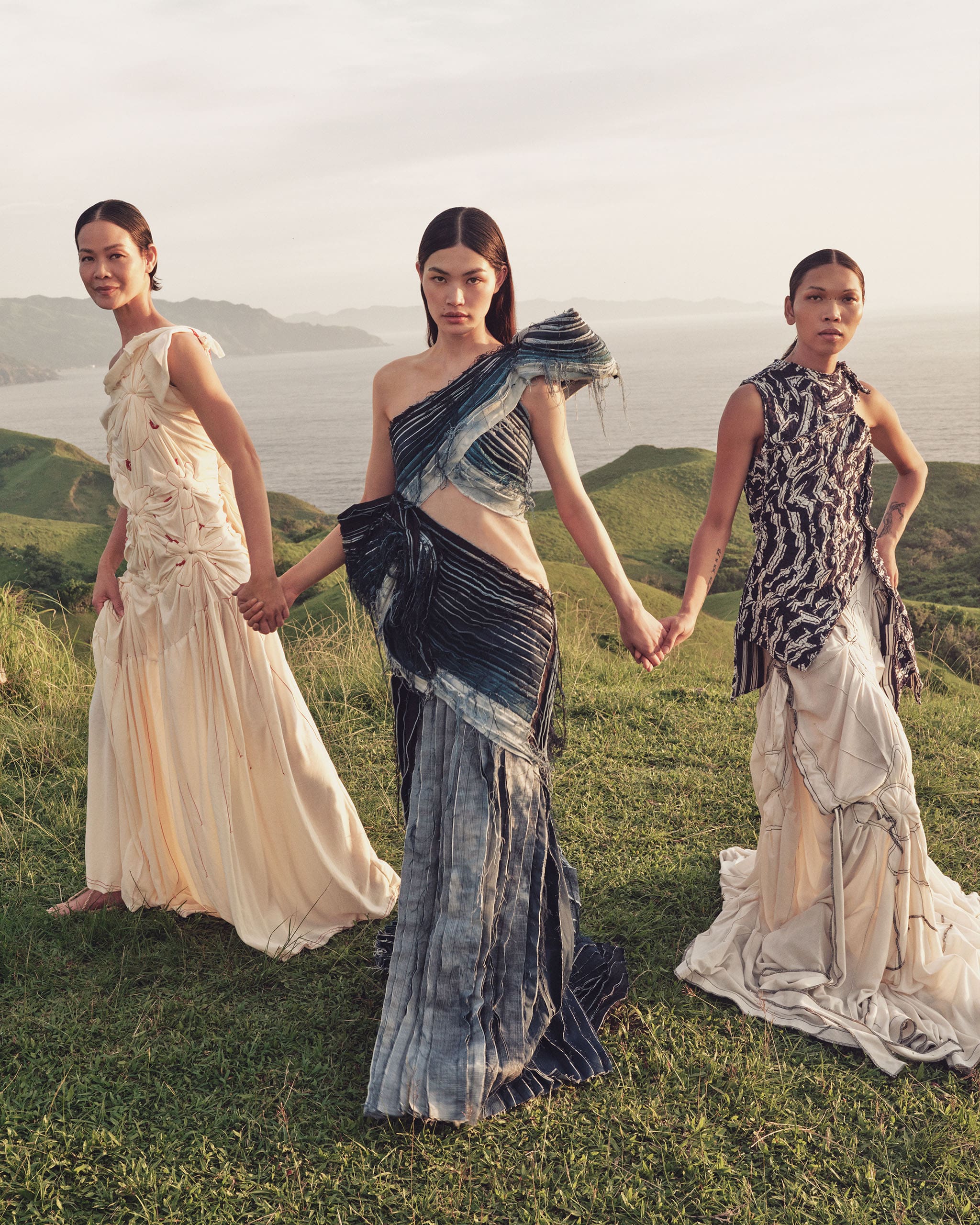This FRANCIS LIBIRAN dress worn by Rina is crafted with scraps of denim, while the CARL JAN CRUZ Flower Ikot gown worn by Jo Ann showcases its fauna-shaped quilts created from hand twisting pique fabric. On Lukresia, the CARL JAN CRUZ Istatwa Siksik top is draped to hug the body and the Kwarto Ikot dress is worn as a skirt. All wear Ivatan Tukap sandals. Photograph by Sharif Hamza.
In the northern highlands, Vogue Philippines weaves a story on high craft and handmade.
Phalaenopsis orchids from a grandmother’s garden. Cockfighting roosters encased in neon green cages. Picasso, jellyfish, sea life. Excess bubble wrap from webstore deliveries, a classmate’s colorful woven rags.
For its first anniversary cover story “Origins,” Vogue invited over a dozen designers and artists to interpret homegrown high craftsmanship and artisanal techniques. Harnessing a shared sentimentality, Filipino creatives collaborated with Vogue to build ensembles that tell tales of their own personal histories.
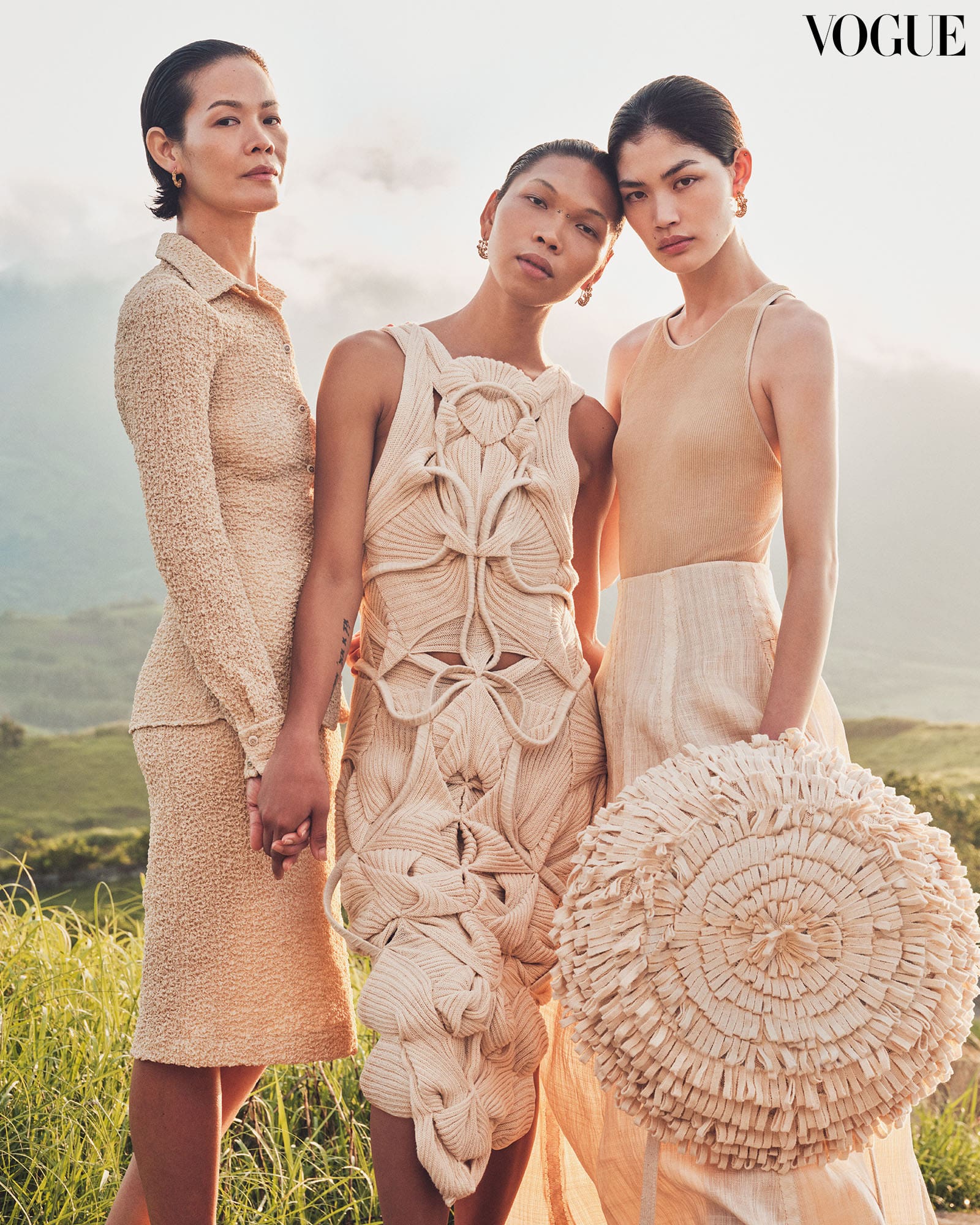
There were designers who drew from mundane childhood memories, like Kelvin Morales. The inspiration for his Sabong dress unknowingly came to him years ago, growing up in Taytay, Rizal. He spent his childhood surrounded by a community of cockfighting aficionados, and their prized roosters whose feathers and tails would peek out of their cages. What stuck were the colors: a striking red and bright green that he interpreted as a silk cocoon frock, with eight panels hand-embroidered by artisans.

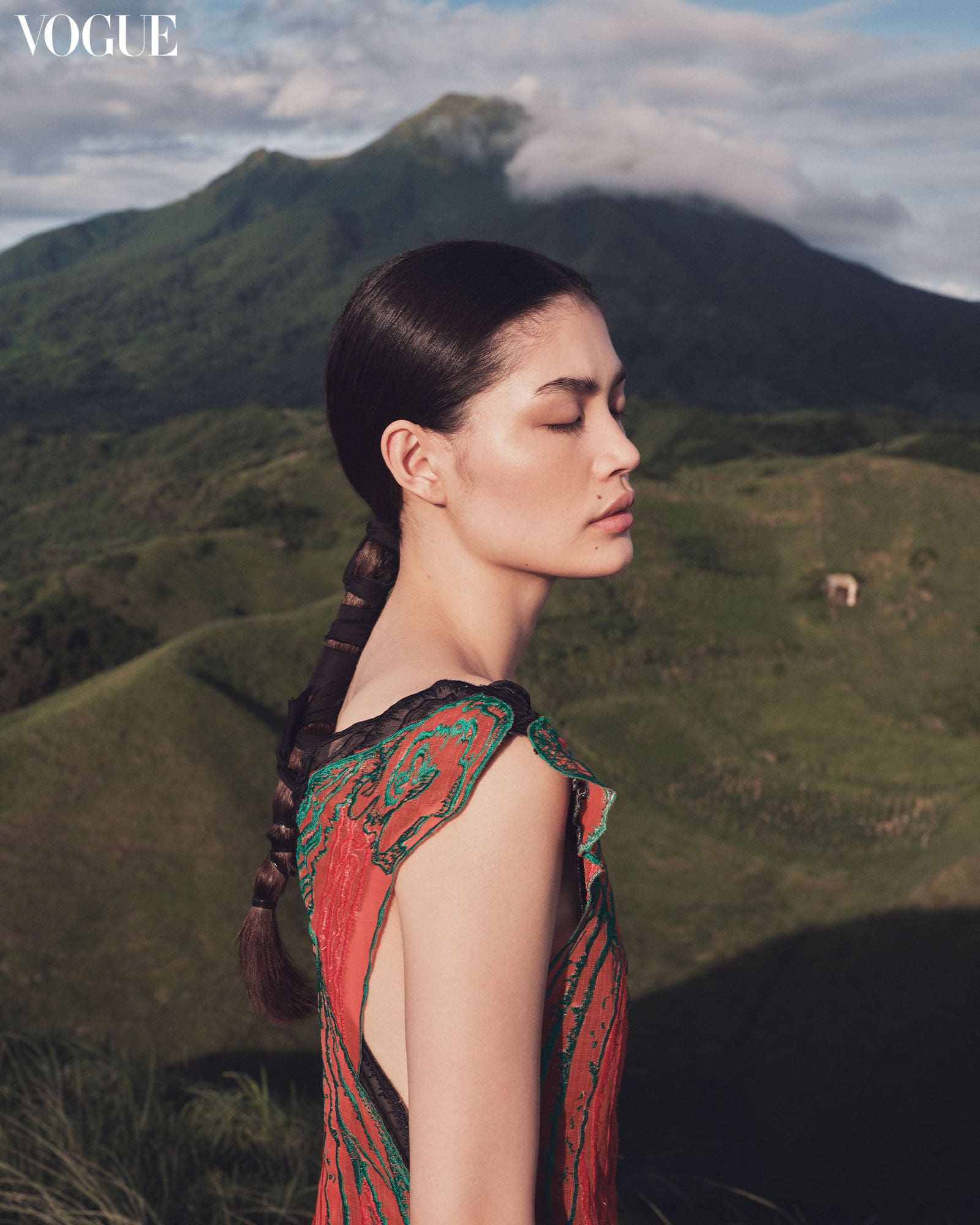
Meanwhile, a monotone set made by designers Ken Samudio and his long-time friend Joseph Bagasao is underscored by opposing aesthetics. Samudio describes himself as a maximalist, and his vivid, intricate beadwork reflecting marine life stands as a testament. “All of the things that I do and the things that you see are fragments of memories of what I saw underwater when I was studying and working as a biologist,” he reveals. On the other hand, Bagasao’s minimalist inclination served as a canvas for Samudio; Bagasao provided a deadstock Japanese cotton twill jacket as the base for Samudio’s embellishments.
Found Objects
There were also designers who simply looked around them. Carla Zhang received her lightbulb moment when she noticed mounds of bubble wrap piling up at home from online deliveries. “Can I work with it instead of just throwing it in the trash bin?” she ponders. “You know, as a designer, you ought to create something [with materials] people take for granted.” And so the Bubble dress was conceived, using her own discarded plastic sheets along with those donated to her by her neighbors.
Elsewhere in Batangas, Neric Beltran noticed a number of plastic bottles scattered on the beach. With help from kids in the local community, Beltran collected the bottles and took them to his Manila studio. There, an in-house artisan manipulated them with a heat gun, then painted the formed flowers black with a shiny lacquer finish. Making the dress with excess beads and existing fabric stocks and off-cuts, Neric shares that he had been reworking clothes since high school. “At that time, for me, it wasn’t really a conscious effort to say that I’m practicing sustainability,” he says, “it’s just the way that things were for me.”

Locally, refreshing and repurposing garments is an age-old practice. Vintage advocate and artist Jodinand Aguillon pointed out that in a Filipino household, old t-shirts don’t ever make it into the garbage bin. They’re passed on from sibling to cousin, and then transformed into rags or rugs. Prolonging a garment’s life is an instinctive Filipino quality; just look to Leby Le Morìa’s modular basahan-inspired dress, Russell Villafuerte’s patchwork of old men’s button-down shirts, and Paolina Russo’s corset made of Adidas sneakers.
In Plain Sight
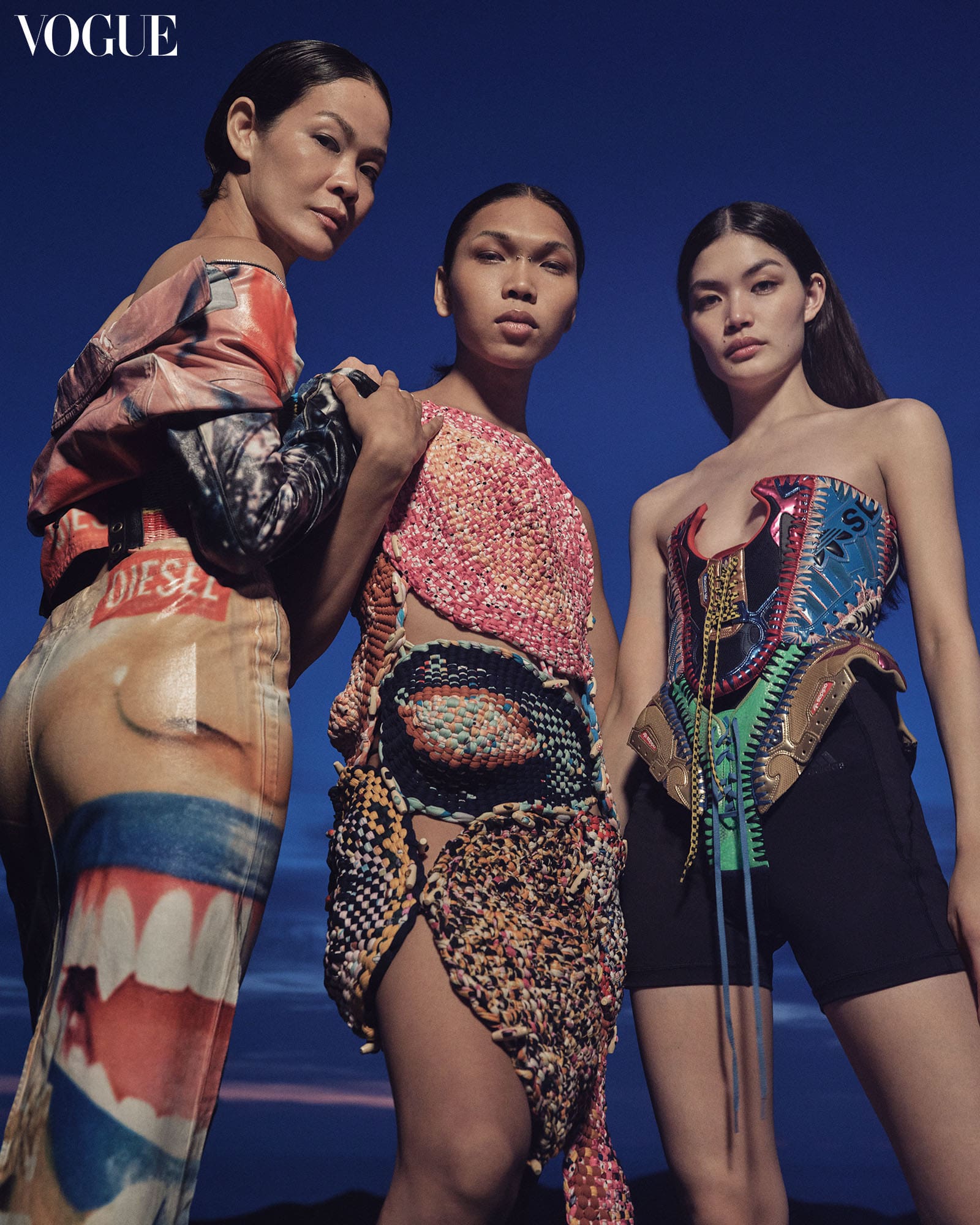
In the most serendipitous moments, cultural treasures are hidden in plain sight. For the cover story, the footwear used were Ivatan Tukap sandals made from abaca. These modular sandals were sourced by fashion associate Renee de Guzman by chance. “I came across these sandals dangling on a metal rod, at a souvenir shop at one of our many stops around Sabtang Island—where you will find stone houses, incredible sceneries of land and sea, and the weaver’s association where they weave the Vakul and Kanayi,” she recalls.
The shoes came with a flat footbed and elongated straps that were tied differently each time. “I feel like having the Tukap as the main shoe for the shoot keeps everything grounded,” says Renee, “it was a nice touch to the craft story.”
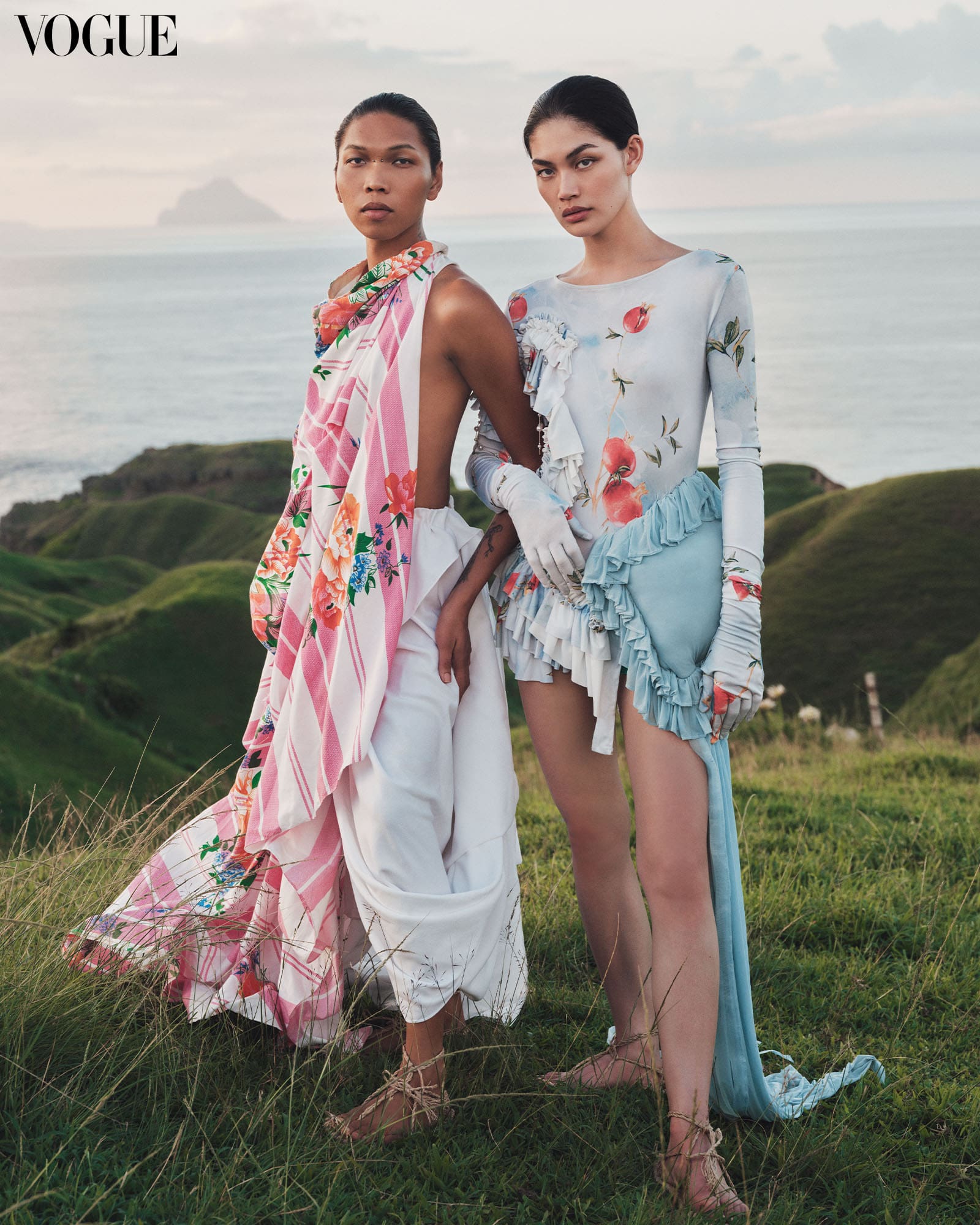
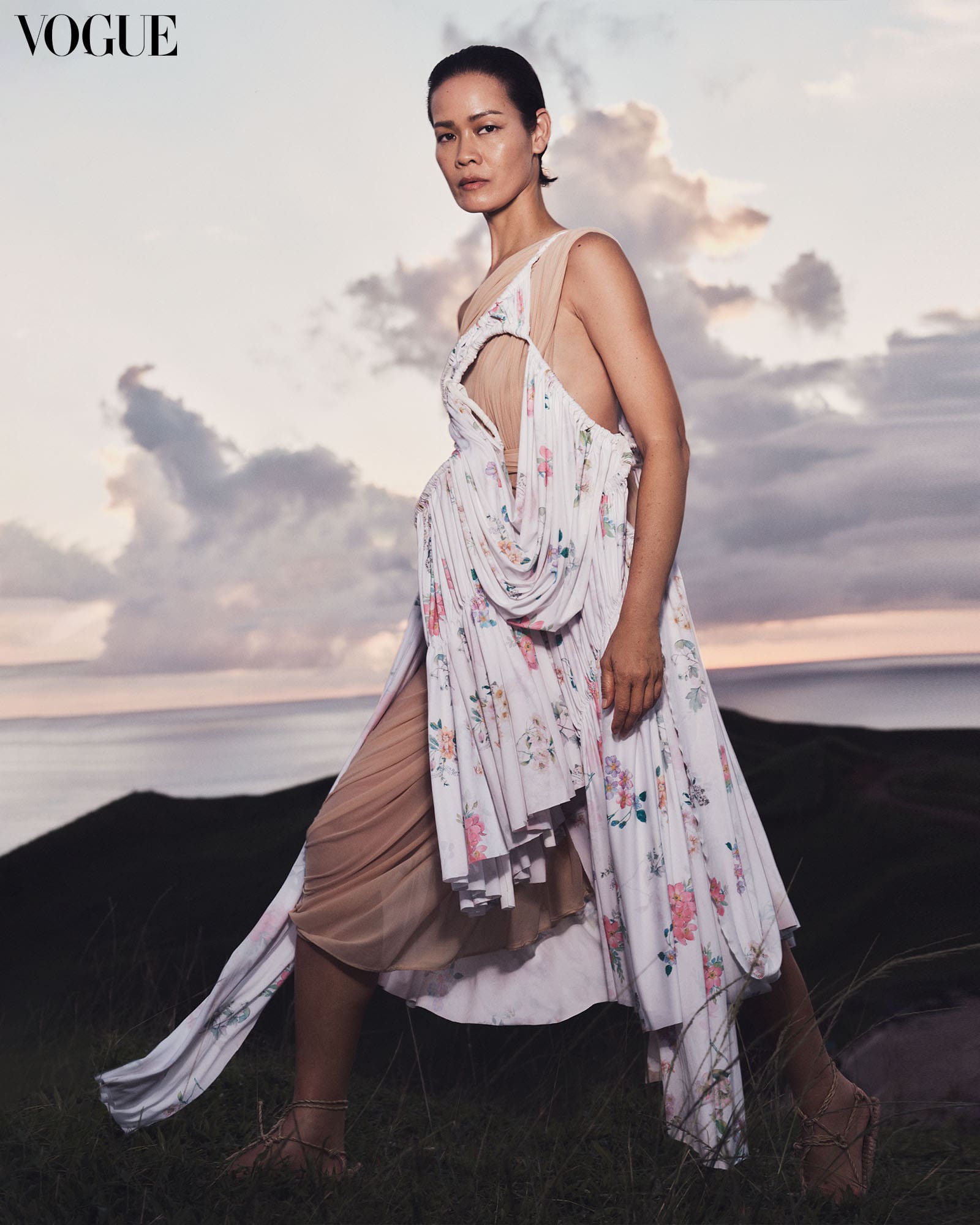
At Fundacion Pacita, where the team lodged for the duration of the shoot, Renee discovered a jewelry display of Inamuhun Ivatan Artisan Jewelry by David Salazar. Salazar is identified as “one of the last metalsmiths who can make jewelry based on traditional Ivatan design with the support of Dr. Florentino Hornedo’s documentation.” His earrings in particular take on distinct curvilinear shapes, adorned with intricate grooves and details.
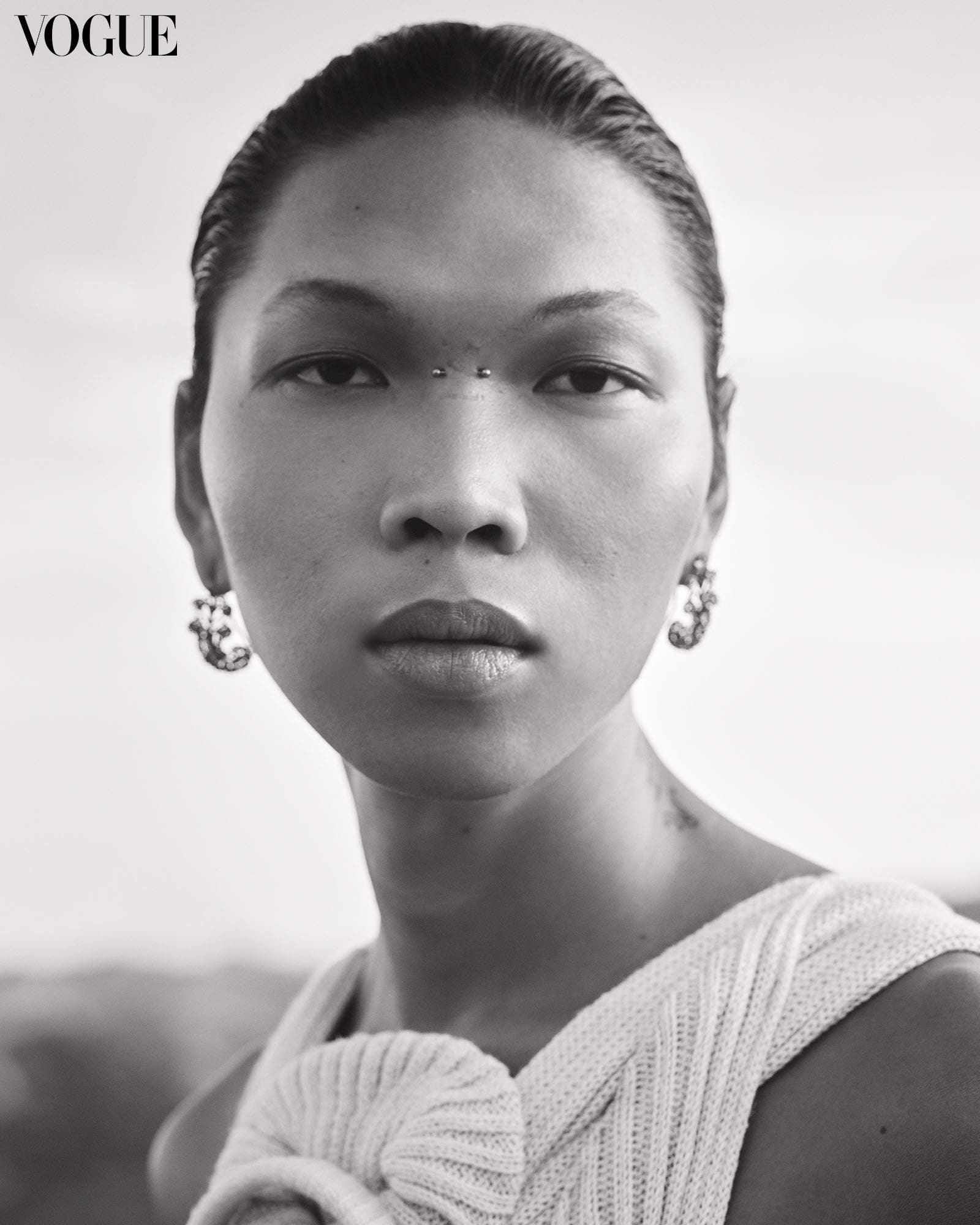
Cultural Fusion
To showcase the harmony between local and global fashion, stylist Melissa Levy insisted on mixing the two. For instance, Ivarluski Aseron’s Banig dress (worn as a skirt) is paired with a blue crop puffer jacket from Japanese brand Sacai.
By merging garments from home and elsewhere, we weave together a multicultural collage that exemplifies our diverse fashion landscape. The threads that make us one are those of heritage, tradition, and memory. And the ways we make these manifest are through hyper-local techniques that have been inherited from artisan to artisan; precious heirlooms that cannot be quantified.

As Bagasao says, “For me, there’s a different story or different feeling if things are done by hand, because you cannot mimic emotion given off by the craftsmen, the patternmaker, the sewer. You cannot mimic that with a machine.” In the age of digitization and machinery, craft at its core is simple, real, and handmade. Craft is something of our own that we can hold, and later, pass on.
By Ticia Almazan. Photographs by Sharif Hamza. Fashion Director: Pam Quiñones. Styling: Melissa Levy. Makeup: Gery Peñaso. Hair: Mong Amado. Models: Jo Ann Bitagcol, Lukresia, Rina Fukushi. Nails: New Lounge PH. Art Director: Jann Pascua. Producer: Anz Hizon. Production Assistants: Bianca Zaragoza, Patricia Co. Photographer’s Assistants: Choi Narciso, JV Rabano, Tim Hoffman. Stylist’s Assistants: Neil De Guzman, Renee De Guzman. Makeup Assistant: Ejjay Salcedo. Hair Assistant: Jeremi Nuqui. Intern: Sophia Lanawan. Shot on location at Fundacion Pacita. Special thanks to Patsy Abad and the National Commission on Indigenous Peoples.
